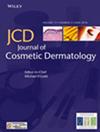Recombinant Type III Humanized Collagen Solution for Injection Promotes Skin Repair in Chinese Population: A Case Series
Abstract
Background
Facial erythema and acne scarring are common skin conditions that significantly impair quality of life, necessitating effective treatment options, particularly in Asian populations.
Aims
To evaluate the efficacy and safety of intradermal injections of recombinant type III humanized collagen (RhCol-III) solution for alleviating facial erythema, improving skin texture associated with acne scarring, and evening out skin tone issues associated with post-inflammatory hyperpigmentation (PIH) from acne while also searching for potential underlying anti-inflammatory mechanisms of the RhCol-III solution.
Methods
This case series included six Chinese participants with Fitzpatrick phototypes III/IV, presenting with facial erythema and/or acne scarring. Participants received intradermal injections of 2 mg/mL RhCol-III solution at baseline, 30- and 60- days post-baseline. Clinical evaluations were conducted using VISIA photography and self-assessed Global Aesthetic Improvement Scale (GAIS) scores. Additionally, in vitro testing was performed using the U937 cell line with lipopolysaccharide (LPS) induction to assess the anti-inflammatory effects of the RhCol-III solution on tumor necrosis factor-alpha (TNF-α) and interleukin-6 (IL-6) secretion.
Results
All participants demonstrated a reduction in facial erythema post-treatment, with significant improvements noted in the zygomatic area. The mean erythema area decreased by 49.3% after 90 days. One case with acne scarring showed visible improvement in scar appearance, skin tone, and texture. Moreover, 0.10 mg/mL RhCol-III solution significantly reduced TNF-α and IL-6 levels in vitro by up to 47.75% and 44.96%, respectively.
Conclusion
RhCol-III solution injections effectively reduced facial erythema and have the potential to improve acne scarring via reduction in the extent of PIH in this series of Chinese cases. The treatment was well-tolerated, with no significant adverse effects. These findings suggest RhCol-III solution as a promising therapeutic option for skin repair and inflammation reduction.

 求助内容:
求助内容: 应助结果提醒方式:
应助结果提醒方式:


